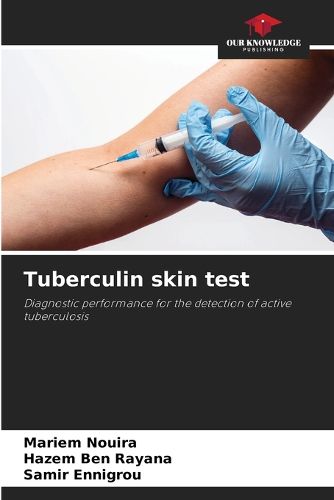Readings Newsletter
Become a Readings Member to make your shopping experience even easier.
Sign in or sign up for free!
You’re not far away from qualifying for FREE standard shipping within Australia
You’ve qualified for FREE standard shipping within Australia
The cart is loading…






This title is printed to order. This book may have been self-published. If so, we cannot guarantee the quality of the content. In the main most books will have gone through the editing process however some may not. We therefore suggest that you be aware of this before ordering this book. If in doubt check either the author or publisher’s details as we are unable to accept any returns unless they are faulty. Please contact us if you have any questions.
Introduction: Ganglionic forms of tuberculosis often escape diagnosis by conventional tests. Our aim was to evaluate the performance of the tuberculin skin test in the diagnosis of active tuberculosis in Tunisia, using ROC curve methodology. Methodology: This was a multicenter case-control study that was conducted in 11 tuberculosis clinics(DAT) in Tunisia in 2014. Results: In total, we included 1053 patients divided into 339 cases and 714 controls. The mean diameter of the tuberculin TST induration was significantly higher in cases than in controls(13.7mm vs.6.2mm;p=10-6).The area under the curve(AUC )was 0.789[95% CI:0.758-0.819;p=0.01], corresponding to a moderate discriminating power for this test. The most discriminative threshold value for the diameter of the induration of the intradermal tuberculin reaction, associated with the best sensitivity (73.7%) and specificity (76.6%), was 11 mm, with a Youden index of 0.503.Conclusion: We can conclude that the tuberculin skin test can be used to diagnose tuberculosis with good sensitivity and specificity. However, its interpretation and reading remain difficult and highly subjective.
$9.00 standard shipping within Australia
FREE standard shipping within Australia for orders over $100.00
Express & International shipping calculated at checkout
This title is printed to order. This book may have been self-published. If so, we cannot guarantee the quality of the content. In the main most books will have gone through the editing process however some may not. We therefore suggest that you be aware of this before ordering this book. If in doubt check either the author or publisher’s details as we are unable to accept any returns unless they are faulty. Please contact us if you have any questions.
Introduction: Ganglionic forms of tuberculosis often escape diagnosis by conventional tests. Our aim was to evaluate the performance of the tuberculin skin test in the diagnosis of active tuberculosis in Tunisia, using ROC curve methodology. Methodology: This was a multicenter case-control study that was conducted in 11 tuberculosis clinics(DAT) in Tunisia in 2014. Results: In total, we included 1053 patients divided into 339 cases and 714 controls. The mean diameter of the tuberculin TST induration was significantly higher in cases than in controls(13.7mm vs.6.2mm;p=10-6).The area under the curve(AUC )was 0.789[95% CI:0.758-0.819;p=0.01], corresponding to a moderate discriminating power for this test. The most discriminative threshold value for the diameter of the induration of the intradermal tuberculin reaction, associated with the best sensitivity (73.7%) and specificity (76.6%), was 11 mm, with a Youden index of 0.503.Conclusion: We can conclude that the tuberculin skin test can be used to diagnose tuberculosis with good sensitivity and specificity. However, its interpretation and reading remain difficult and highly subjective.